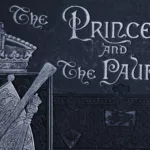
What Makes a Good Story?

Every writer aims to tell a story that captivates, resonates, and stays with readers long after they turn the last page. Everybody wants to write a good story. They want their readers to immerse themselves in their narrative world, and maybe even find something thought-provoking in its pages.
But what exactly makes a story “good”? Is it the plot, the characters, the setting, or something less definable?
“Good” is subjective. What one reader might enjoy is not what another reader will take from it. One reader might only consider books with beautiful prose and perfect line craft good, whereas another might not care at all about the quality of individual lines as long as the story entertains them. But, while there isn’t a definitive answer to what makes a good story, there are certain elements that stories share to make them entertaining and draw readers in.
Know your audience
The most important element of writing a “good story” is to know your audience. What your readers will consider good will depend a lot on the genre you’re writing in, or the audience you’re writing for, so it’s absolutely essential to know this in advance.
For instance, young adult novels often focus on coming-of-age themes and fast-paced plots, while literary fiction might prioritise complex characters and layered themes. Readers of thriller and crime novels would look for suspense, action, and unpredictability, readers of historical fiction might prioritise historical accuracy and realistic plot development, while those who read paranormal romance might prefer elements of fantasy, mystery, and the temptation of supernatural love.
A book that doesn’t consider its audience is never going to be considered “good” by its readers. So the first step for any good story is to write one that your intended audience is going to want to read.
Engaging characters
The heart of any great story often lies in its characters. Characters are the soul of a narrative that readers connect with. What makes a good character will once again depend on your audience, so make sure you consider your readers in all the following advice.
- Relatable: Well-written characters emulate authentic emotions and decisions. They have strengths and flaws that readers can empathise with or recognise in themselves or others.
- Dynamic: Your characters must grow and change throughout the story in a way that serves the story you are telling. This keeps readers invested in their journey.
- Memorable: Characters should leave a lasting impression through distinct personalities, desires, and conflicts, all of which work toward serving your narrative goal or your story’s intended theme.

Have a compelling plot
A plot is more than just the events that occur in the story; it’s how those events unfold and affect the characters. The kind of plot your readers will enjoy the most will depend on the genre you’re writing in. A good story doesn’t always mean it’s fast-paced or action-packed.
- Original: No matter what kind of story you’re telling, it should be original and should be written with a unique voice. Even traditional plots and genre tropes can be told in new, innovative ways.
- Structured: Readers need to be able to clearly follow your story, or be challenged in a way that works within your narrative arc. A clear beginning, tension-building middle, and satisfying end are key, even if you’re playing with timelines, structure, and style.
- Paced appropriately: The story should have a rhythm that keeps readers engaged without overwhelming or boring them. This pacing also needs to be audience-appropriate. Readers of literary fiction are more likely to tolerate a book with a slow pace and lots of narrative detail, whereas someone looking for a popcorn read will expect something a lot more fast-paced.
Immersive settings
The setting grounds the story in time and space, providing context for the characters’ actions. Your setting doesn’t need to be an expansive world to be immersive. It can be nothing more than an intimate family dinner in the dining room of a small flat. No matter where your story is set, however, your readers must feel grounded in that setting, whether that’s through comprehensive worldbuilding or a detailed description of a single place in time.
- Reflects the theme: The setting should complement the story’s mood and theme. By letting your settings mirror the internal conflicts of characters or the broader issues at play in your story world, you can subtly reinforce your narrative theme without overt exposition.
- Feels alive: Your story setting is more than just a backdrop; it can have character and influence the story. By giving the setting a sense of depth and reality, it makes your story feel real to your readers.
- Appropriate level of detail: Not all settings require a lot of description, so it’s important to know when to describe, and when to leave something to the reader’s imagination. Know the difference between an integral setting and an incidental setting. Is it essential to your story development, or just a location where a scene takes place?
Emotional resonance
A good story resonates emotionally with the reader. The way a reader will engage emotionally will depend a lot on what they expect to get out of it. In a romance novel, for instance, a reader would expect their investment to be mainly around the love plot and the character development that serves it. A literary reader, on the other hand, might be more invested in a deep exploration of emotional complexity.
- Universal themes: No matter what the thematic driver of your story is, it should have a universal appeal that corresponds to an emotion your reader should feel. Popular themes include love, loss, desire, and fear; themes that everyone can relate to.
- High stakes: Emotional resonance happens when characters are in situations where the outcomes matter deeply to the development of the story. It can be a moment of joy or of profound sadness, so long as it has an impact on the reader.
- Nuanced relationships: Complex relationships between characters add depth to any narrative. No matter what form a relationship takes, whether it’s between love interests, siblings, parents and children, or even friends, how those relationships grow, develop, and change over time will speak to your readers.
In summary
A good story is a tapestry woven with multiple threads — characters, plot, setting, and emotional resonance. When these elements come together in just the right way, they speak directly to your audience, so it’s important to get the balance right and tailor your writing to suit your readers. That’s how you tell a good story.































